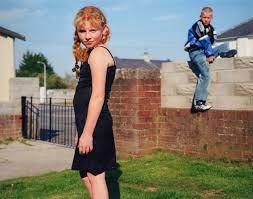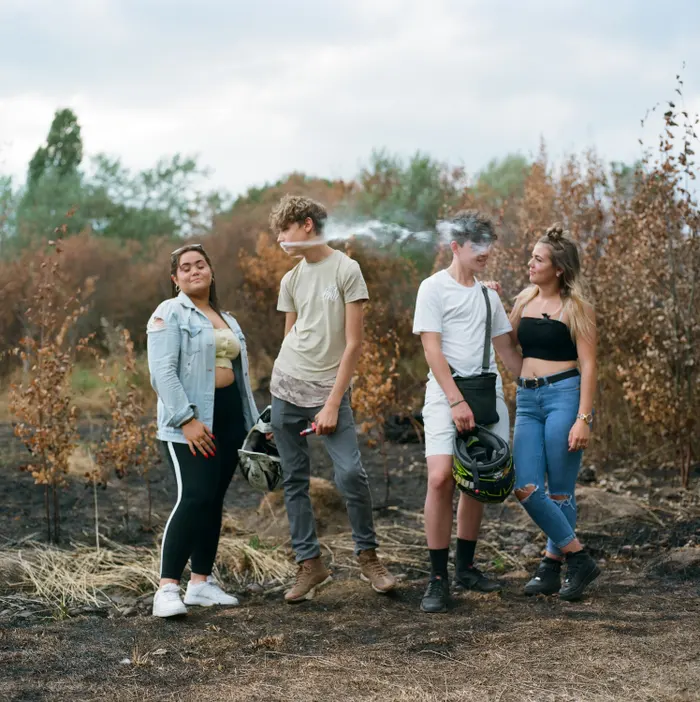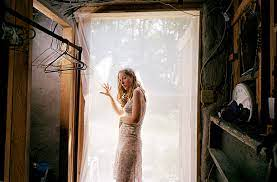 |  |  |
 |  |  |
Different Types of Environmental Portraits by many different photographers.The table shown above includes 6 different environmental portraits by 6 different photographers. Each different photo portrays a different type of environment , the first image portrays a girl and a boy, giving ideas of a relationship between them based on the distance between them maybe one with tensions, the idea of them in the garden and the boys clothing portrays ideas about their social class maybe being a little bit on the lower side. The environment of that image led me too all those connotations, that’s why the environment of your image is so important to the viewer’s, its sets a whole basis for thinking.
Ways in which we use environmental portraits~
Environmental Portraits can be used for many different things, a main reason being business, they are a tool that can help a business connect with its potential clients. They can show a more realistic and authentic representation of a workers everyday routine, which may make the business more appealing, opposed to regular old business headshots. Workplaces, like offices, tend to be flatly and evenly lit, which makes them good for a photoshoot without needing to set up a background. Environmental portraiture offers more options than traditional headshots when it comes to cropping photos. Capturing the subject’s stance, gestures, and corporal expression shows they are real people. Recently, it has become very common to see companies use environmental portraits instead of the classic business portraits or headshots, and it works. However, that doesn’t mean business headshots and environmental portraits are the same thing.
Environmental portraits are powerful tools in photography that convey a subject’s personality and story through their surroundings. Here are several ways to use environmental portraits effectively:
- Contextual Storytelling: Use the background to provide context about the subject’s life, interests, or profession, enhancing the narrative and allowing viewers to gain insight into who they are.
- Emphasizing Character: Choose settings that reflect the subject’s personality or hobbies, helping to illustrate their identity and creating a deeper connection with the viewer.
- Creating Atmosphere: Use lighting and composition to establish a mood or atmosphere that complements the subject, enhancing the emotional impact of the portrait.
- Capturing Action: Incorporate dynamic elements by photographing subjects engaged in activities relevant to their environment, making the portrait feel more alive and authentic.
- Incorporating Details: Include objects or elements in the environment that hold significance for the subject, adding layers of meaning and personal touch to the image.
- Balancing Elements: Use composition techniques to balance the subject with their environment, ensuring the viewer’s eye is drawn to the person while still appreciating the setting.
- Highlighting Relationships: In group environmental portraits, show interactions among subjects within a shared space, emphasizing connections and relationships.
- Experimenting with Angles: Explore different perspectives and angles to create unique and compelling compositions that highlight both the subject and their surroundings.
- Using Natural Light: Leverage natural lighting to enhance the mood and texture of the environment, creating a more organic and engaging portrait.
- Conveying Emotion: Use the environment to evoke specific emotions, whether it’s warmth, solitude, or vibrancy, aligning the setting with the subject’s feelings or story.
By thoughtfully integrating the subject with their environment, environmental portraits can create rich, engaging images that resonate with viewers and tell powerful stories.
What actually is an environmental portrait?
Environmental portrait photography is the art of taking pictures that will be used to tell a person’s story via its connection to a certain place. This connection often reflects the message that the environmental portrait photographer wants the viewer’s eye to receive. Great portraits of this sort will capture people’s interaction with their natural surroundings to tell strong stories that generate an emotion in the viewer, giving insight into where these people are, what they do and who they are.
An environmental portrait is a type of photography that captures a subject in their natural surroundings, providing context about their life, personality, and interests. Unlike traditional portraits that often focus solely on the subject’s face, environmental portraits incorporate elements of the background to enhance the narrative and emotional impact of the image.
These portraits often showcase the subject engaged in an activity or situated in a setting that is significant to them, such as their home, workplace, or a location that reflects their hobbies or passions. The combination of the subject and their environment helps to tell a more complete story, offering viewers insights into the individual’s identity and lifestyle. Environmental portraits can range from casual and candid to formal and composed, and they are widely used in editorial, documentary, and fine art photography.
Hoe to create a good environmental portrait
- 1. Get to know the subject. As a photographer, you can increase your subject’s comfort in front of the camera by connecting with them on a personal level. By getting to know them a little, you’ll be able to better figure out the type of shot that reflects who they are. This is a great time to talk about possible locations, such as their workplace, their home, or an urban or natural area where they like to spend time.
- 2. Get to know the location. Research potential locations to understand the layout and available lighting conditions so that you can come properly equipped with the right gear. Test out different portrait lighting setups if necessary to ensure you’ll get what you need.
- 3. Make a plan. Have a few shots in mind that you know you want to capture, especially if you’re working with natural light. Depending on the available light or present colors, you may also want to instruct your subject on what they should wear, or some particular poses to try.
To create a good environmental portrait, start by choosing a location that reflects the subject’s personality, interests, or profession, ensuring it enhances the narrative of the image. Pay attention to composition by framing the subject thoughtfully within their surroundings, using elements like leading lines or the rule of thirds to guide the viewer’s eye. Utilize natural light for a softer, more organic feel, and consider the time of day to capture the best lighting conditions. Engage the subject in an activity or pose them naturally within the environment to convey authenticity and emotion. Finally, include meaningful details in the background that add depth to the story, ensuring the focus remains on the subject while still allowing the environment to play a significant role in the portrait.
Reviewing the Photos
Reviewing the photos after a photoshoot is a crucial step in ensuring the quality and integrity of the final images. This process allows photographers to assess the composition, lighting, focus, and overall aesthetic of each shot, ensuring that they have captured the intended vision and achieved the desired results.
Taking a close look at every detail is essential for identifying any potential issues or areas for improvement. Pay attention to composition and framing, ensuring that elements within the frame are well-balanced and visually appealing. Check for proper exposure and lighting, making adjustments as needed to enhance the overall mood and atmosphere of the images.
